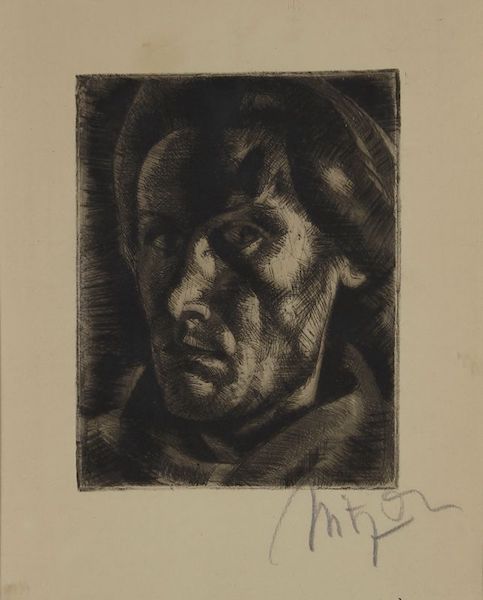Biography
Hungarian painter and graphic artist, one of the most important figures of Hungarian activism. His later brother-in-law Lajos Kassák had a decisive influence on his career. First as a locksmith, then with the financial support of his brother, he enrolled at the College of Applied Arts in 1907, where he began his studies in decorative painting. His master was György J. Feichtinger, whom he still remembers fondly half a century later. It was from him that Uitz learned the technique of fresco painting, a subject of which he was proud throughout his life. It was also the beginning of his close friendship with József Nemes-Lampérth, which later - in contrast to the academic spirit - had a liberating effect on Uitz. From 1908 he attended the Academy of Fine Arts, where he was taught by Ede Balló and Károly Ferenczy. Parallel to his studies in fine arts, he also modelled for a living at the college. In his final year, he did not enrol at the College, preferring instead to attend the Epreskert, where he not only took his art in a new direction, but also his life. He met Teréz Kassák, and after 1912 - following Nemes-Lampérth's example - he developed his constructive-expressionist style, with which he created a school. His first great success was in 1914 at the exhibition of the Young Artists' Association, where the state and Marcell Nemes bought all his exhibited paintings. He visited the Kecskemét Artists' Camp, and from 1915 he joined the circle of A Tett, then MA, and took part in the editing of the latter's journal of the same name.
His etchings won the gold medal at the 1916 San Francisco International Exhibition. Goya, Renaissance fresco painting, Cézanne and the Cubists, the German Expressionists, Picasso and the Hungarian Eight influenced his art. During the Hungarian Soviet Republic he was director of the Proletarian Workshop. After the fall of the Communist Party he was imprisoned and forced to emigrate. In Vienna, he continued to edit the journal Ma with Kassak, but after great controversy, he left the Circle with Aladár Komját and founded the journal Egység.
From 1916, Béla Uitz was at the height of his creative powers. In 1920, an exhibition of his works was held at the Freie Bewegung in Vienna and in 1923 at the Österreichisches Museum. In 1921 and 1922 he travelled to Moscow, and on his return to Vienna he produced his famous series of 14 etchings, the General Ludd sheets. Between 1924 and 1926 he lived in Paris, where he exhibited his works under the pseudonym Martel. He was mainly commissioned by the French Communist Party, for whom he made prints and posters. At the same time, his album Contre la guerre impérialiste was published with a foreword by Marcel Cachin. In Paris, he had two collections exhibitions at the Clarté Salon.
In 1926, he travelled to Moscow, where a collection exhibition of his works was held in 1928, and he was appointed professor at the Moscow Academy of Fine Arts. In 1930, he was awarded the title of "Merited Artist" by the Soviet government. For five years he was secretary of the International Bureau of Revolutionary Painters. Between 1936 and 1938 he worked in Frunze, the capital of Kyrgyzstan. In 1938, he was arrested and imprisoned, but after a year and a half he was released because his decorative skills and organizational strength were much needed. In 1948, to mark the 800th anniversary of Moscow, he created a huge 42x8 m pano of Kropotkin Square, on which he captured a future vision of the city.
Uitz had several international exhibitions. In 1968, the Hungarian National Gallery organized a large collective exhibition of his works. Uitz returned to Budapest in 1970. His works can be found in the Hungarian National Gallery, Hungarian provincial museums, the Albertina in Vienna, the gallery of the Pitti Palace in Florence, several museums in Moscow and the Hermitage in St Petersburg.

